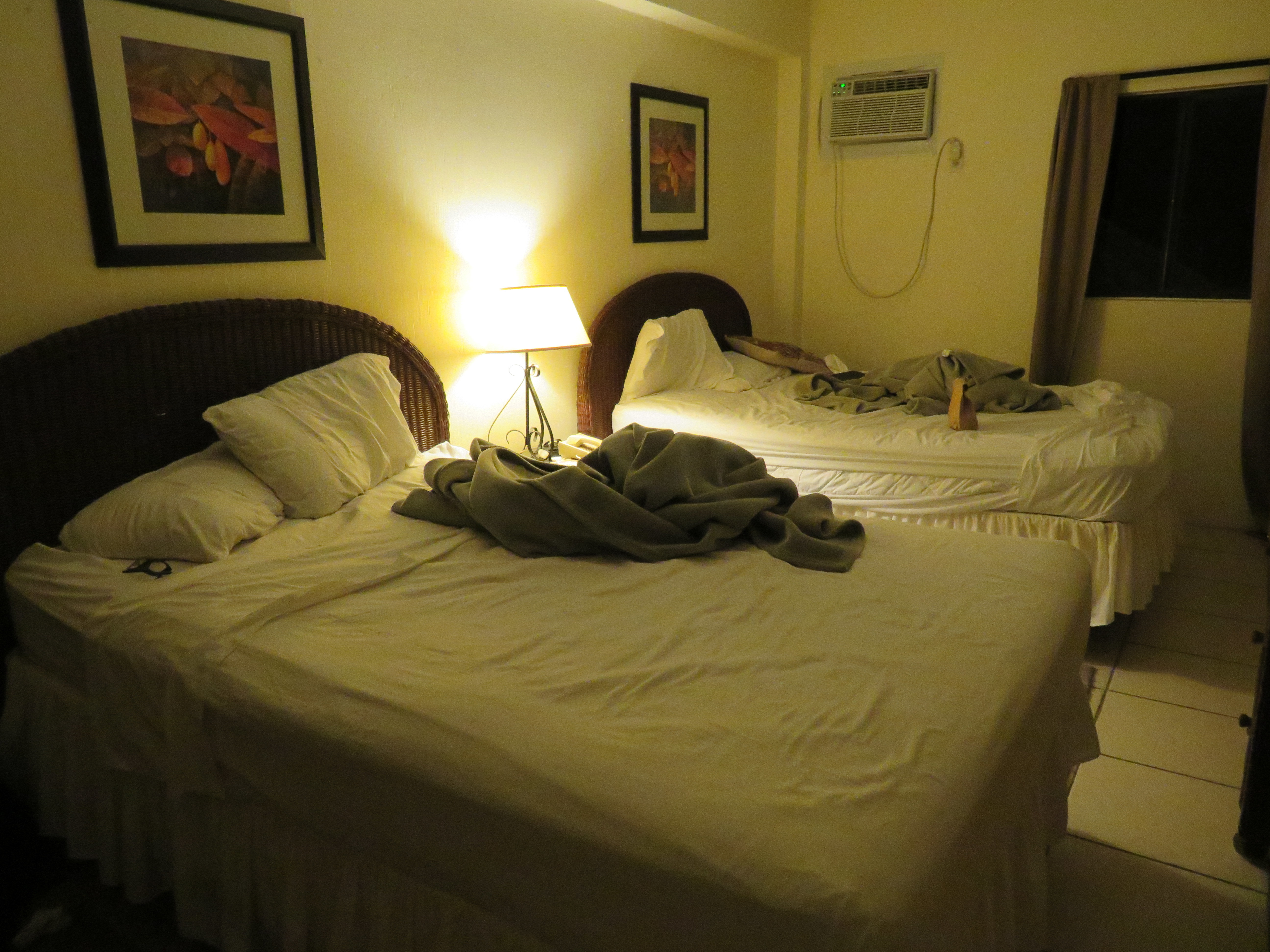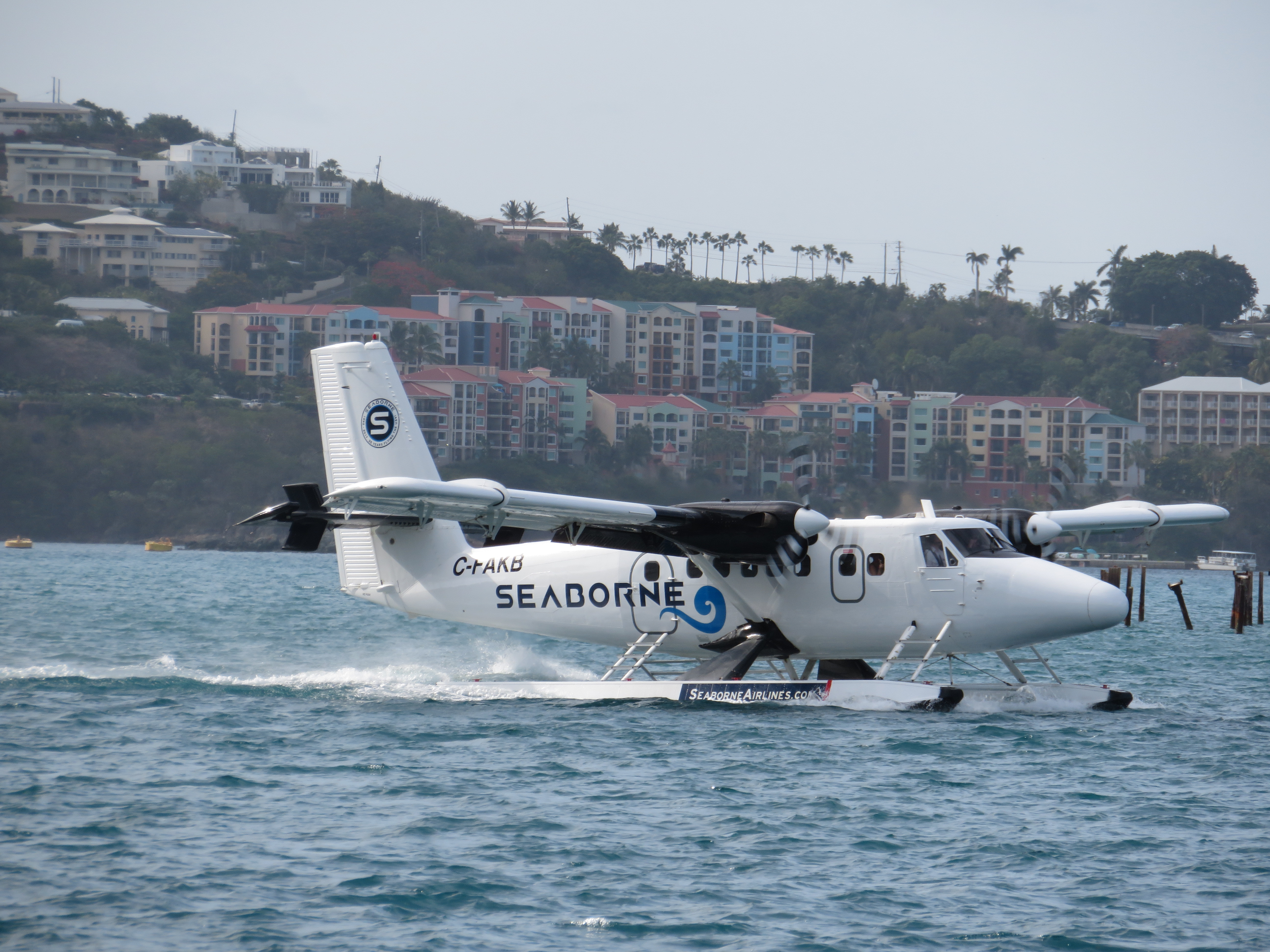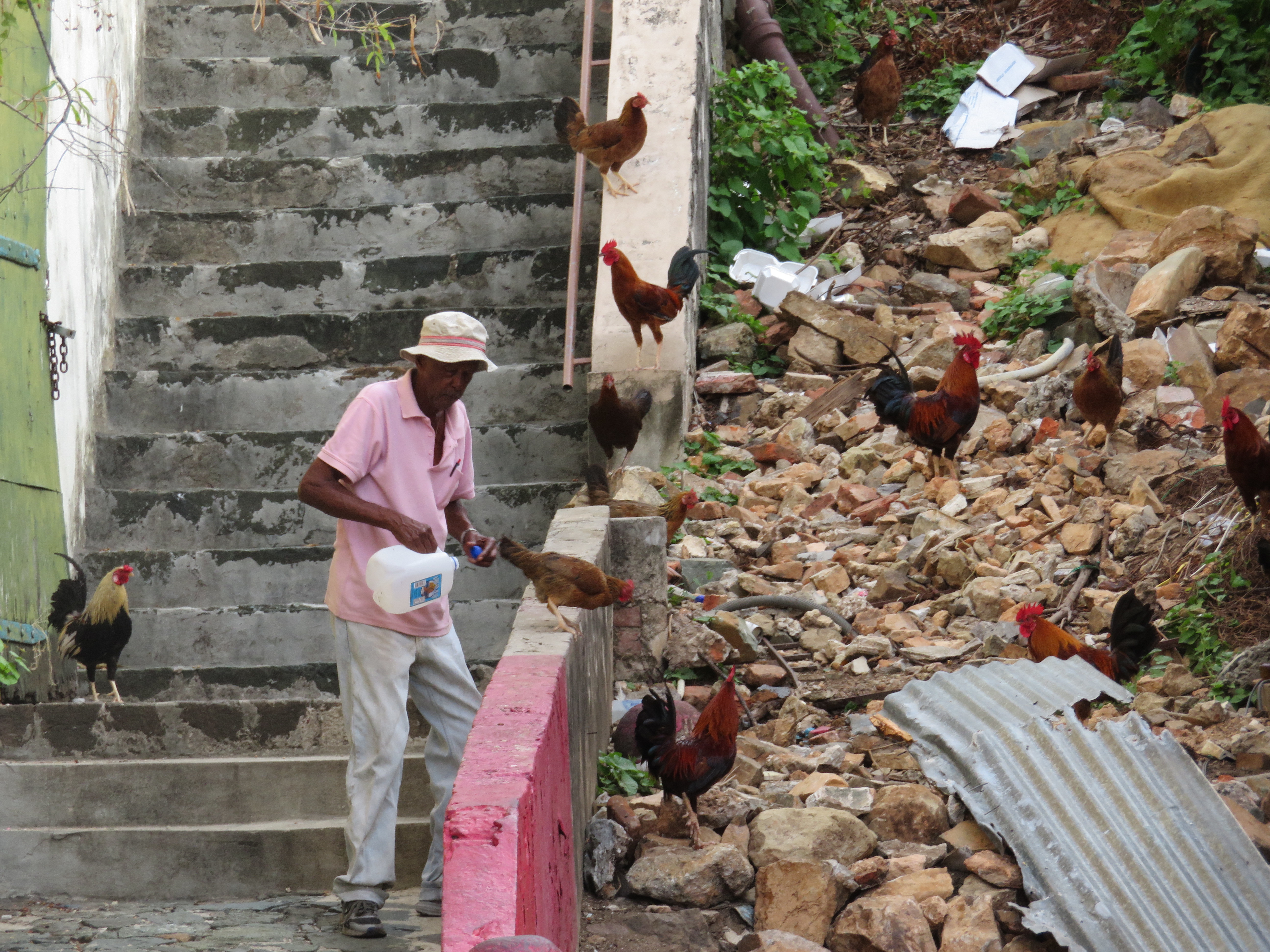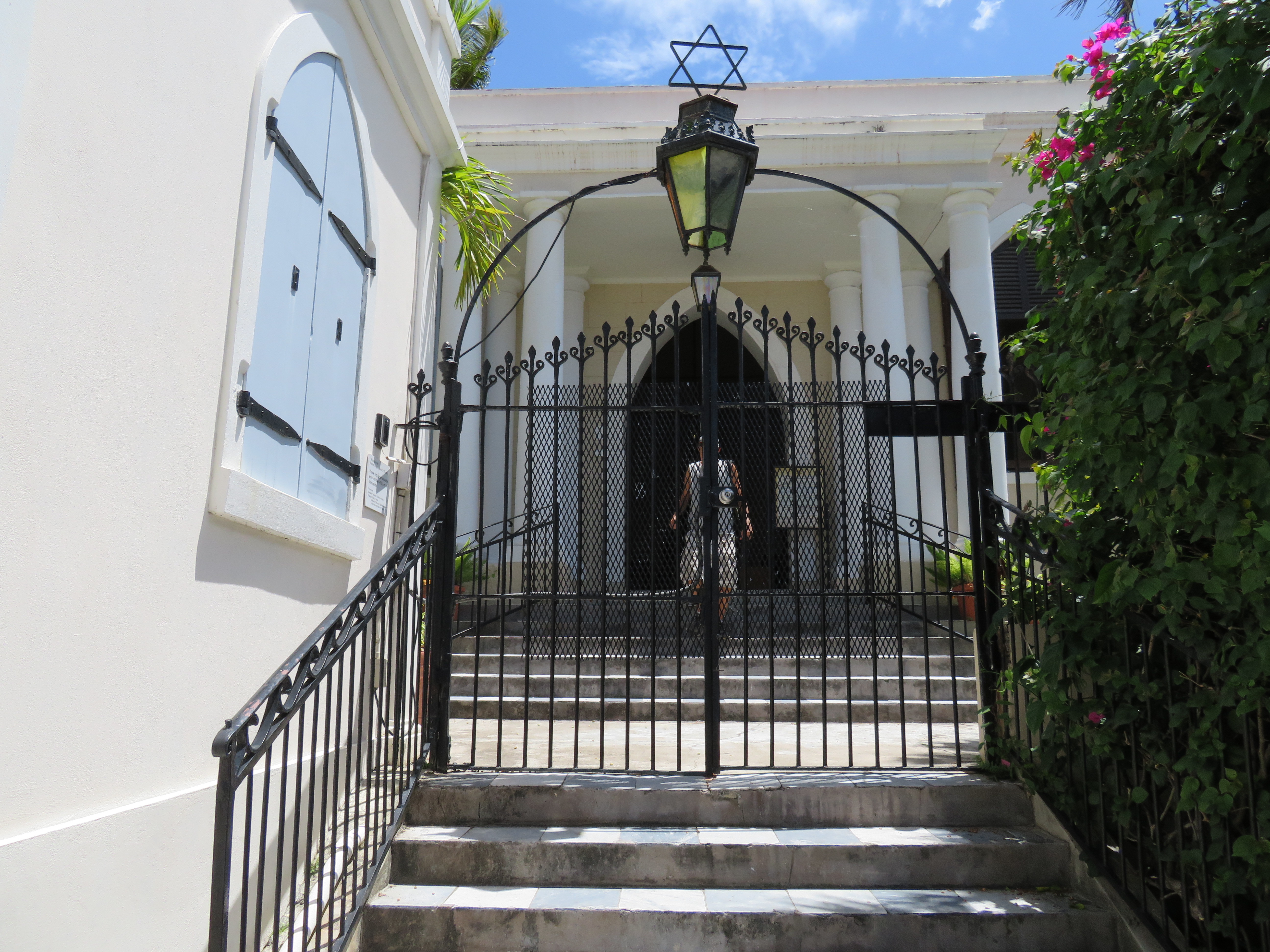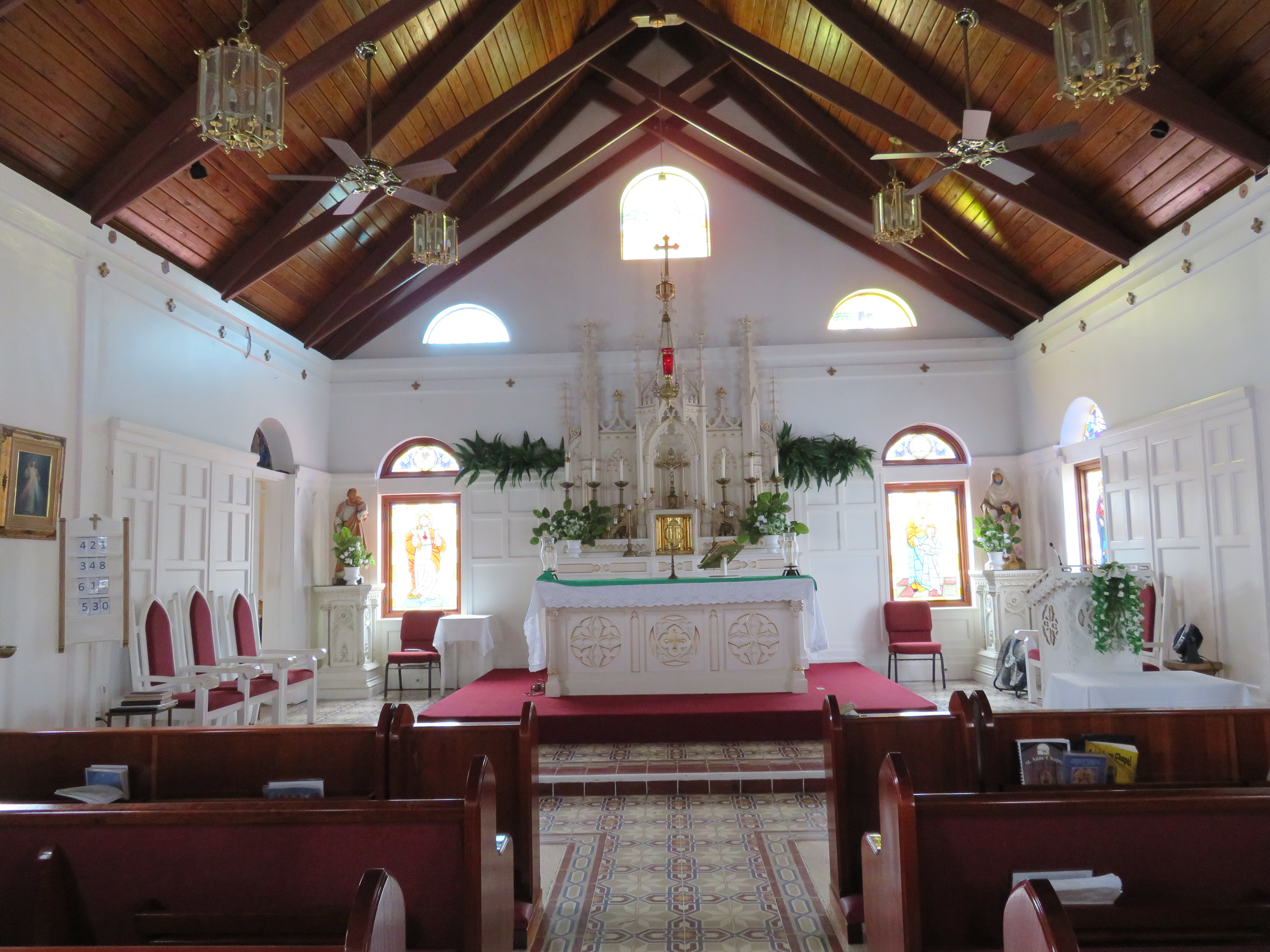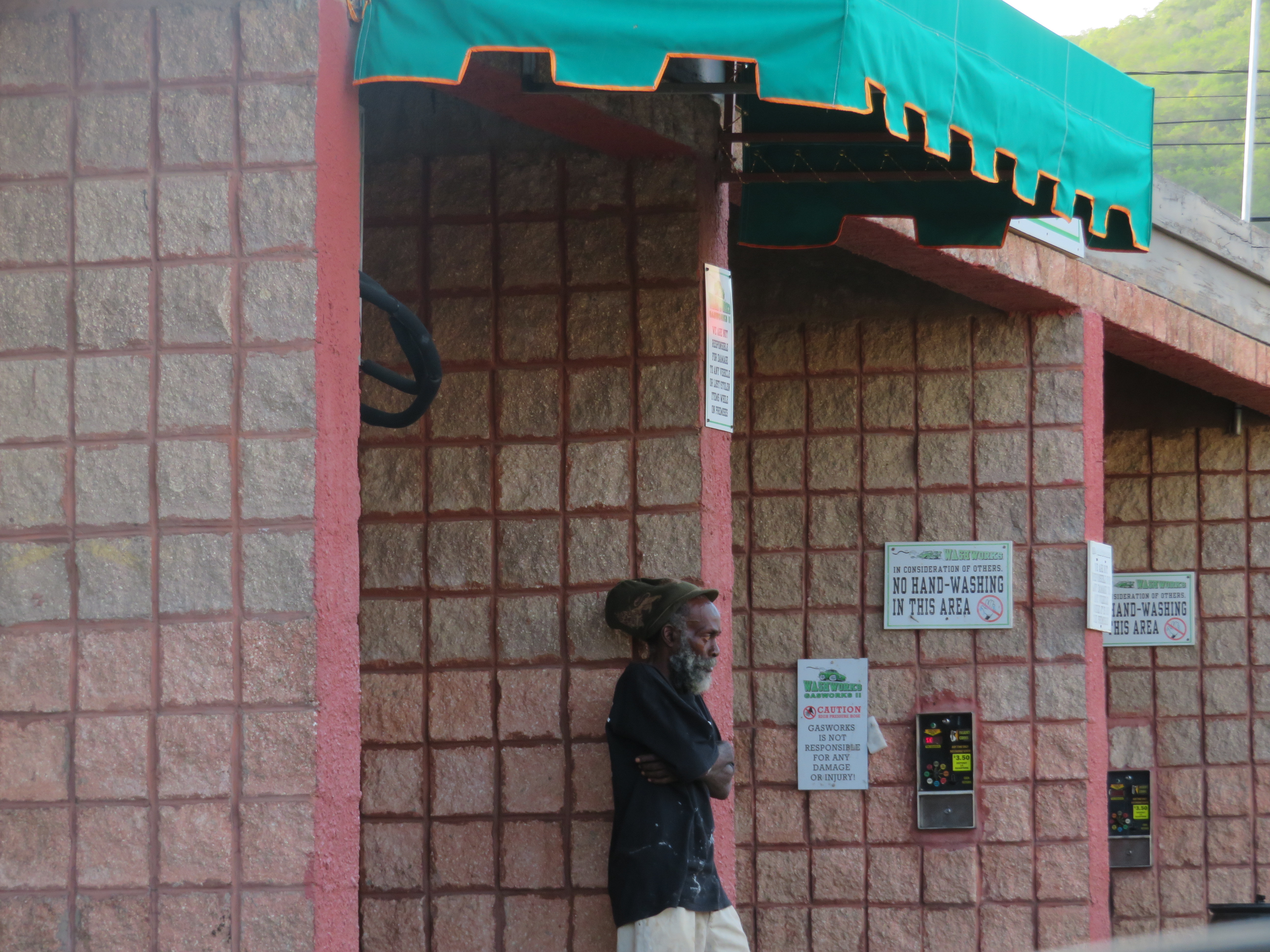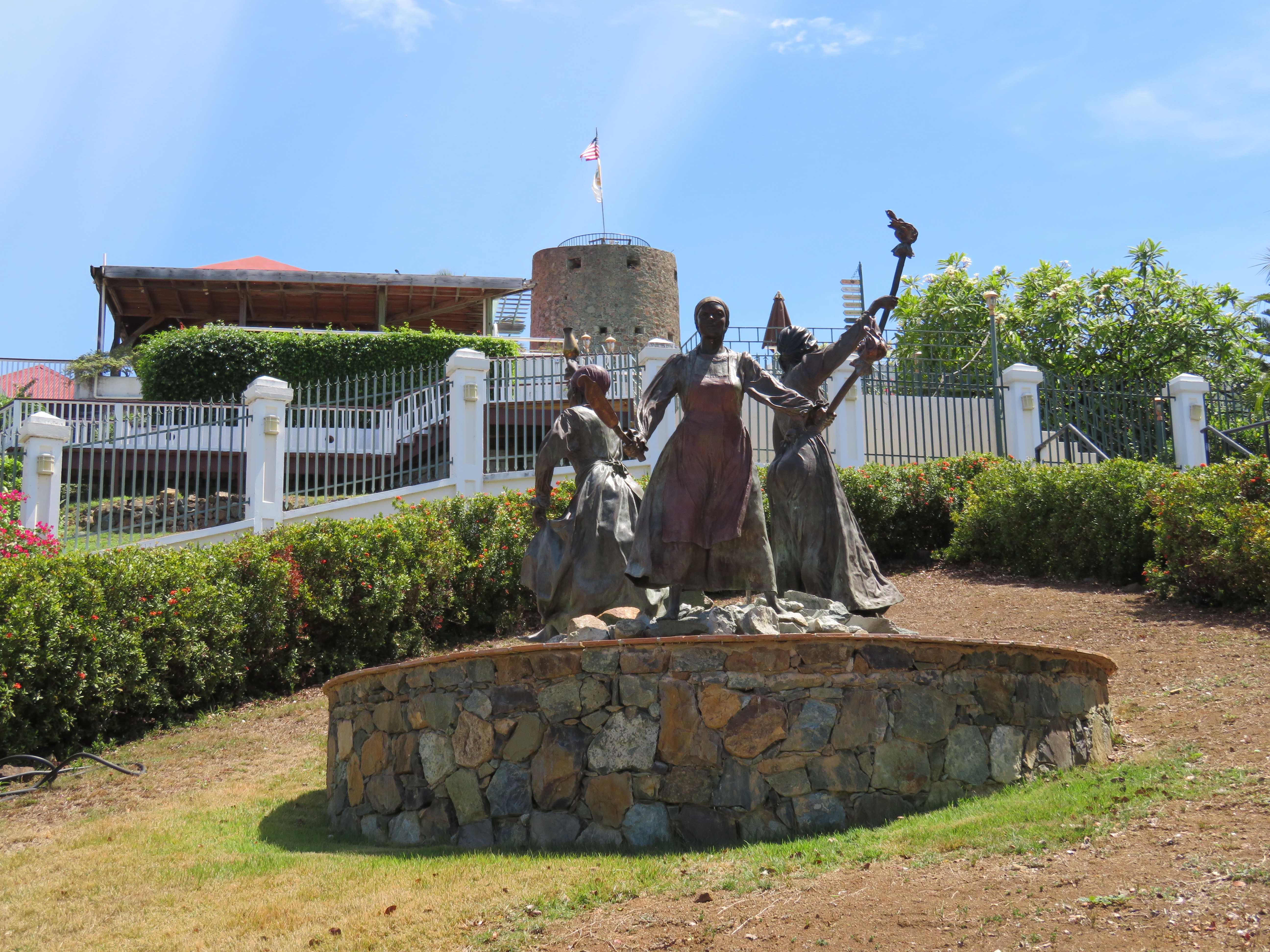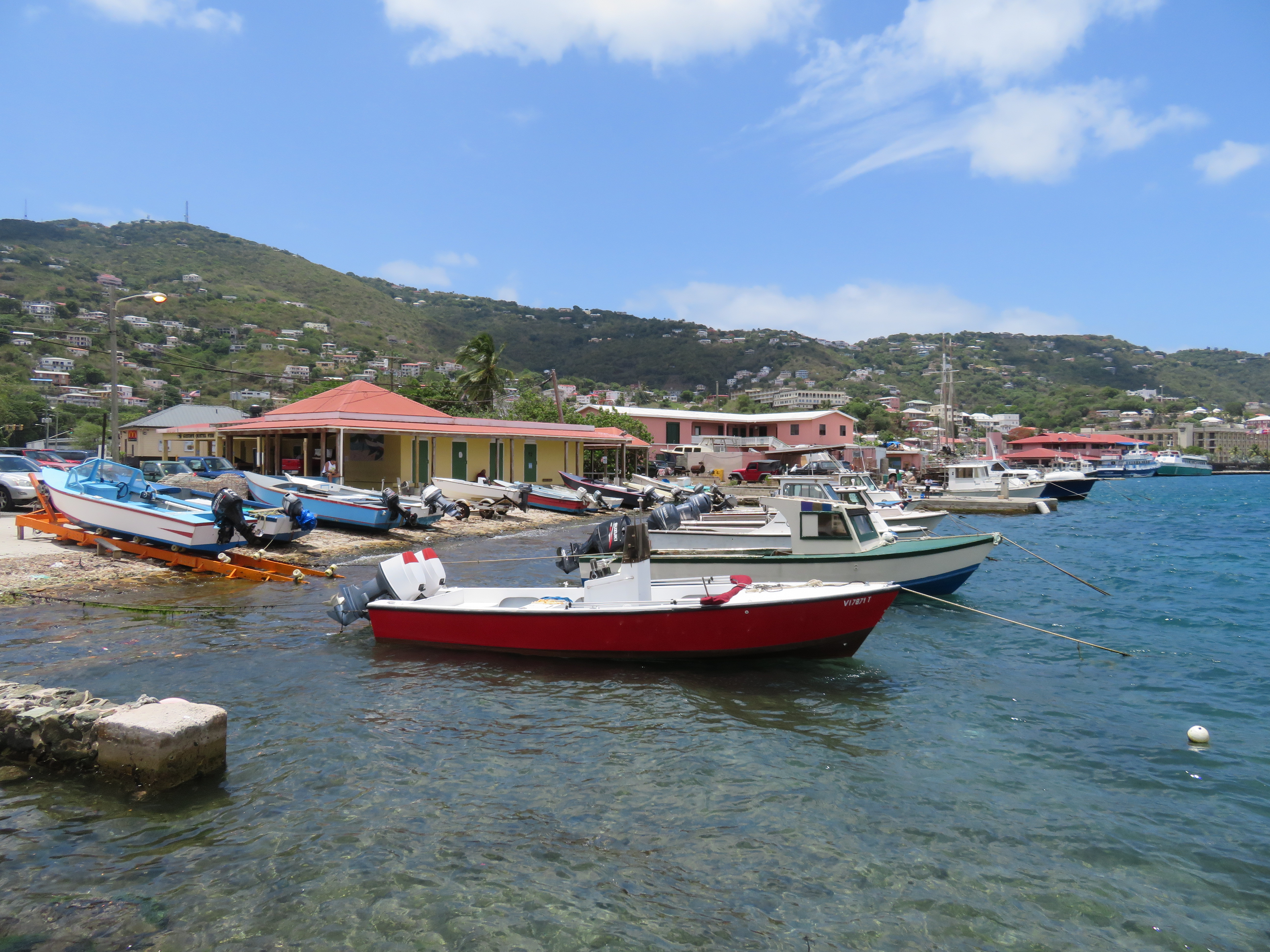Prior to arriving in St. Thomas in the U.S. Virgin Islands, I was less than thrilled. My imagination conjured up hordes of Americans lumbering out of cruise ships to the music of Bob Marley while looking for t-shirts with St. Thomas across the front, young ladies getting their hair braided, and everyone in the mood for a Caribbean experience that did not involve getting too far out of their comfort zone. Thankfully, I was mostly wrong about my preconceived ideas but only by a few months. Let me back track just a little. I needed some time off. These days, I talk more of travel than getting on a plane. An old friend and I had been burning our candles at both ends and the duality began to show physically. We needed both a distraction and to unwind and this trip became our opportunity to do just that.
Let me back track just a little. I needed some time off. These days, I talk more of travel than getting on a plane. An old friend and I had been burning our candles at both ends and the duality began to show physically. We needed both a distraction and to unwind and this trip became our opportunity to do just that.
“The cruise ships come in the winter, when it gets cold in the U.S.,” one of the workers at our less than perfect hotel mentioned to me as I wondered, out loud, were is everyone? Immediately, I smiled putting myself at so much ease that my friend noticed how happy I was with this development. The week we spent on St. Thomas was quiet: no interruptions, e-mails, or need to be anywhere at a particular time. Our mornings were slow and casual as we ate breakfast on our hotel's balcony, staring at the immensely blue waters and skies until we realized there was no differential between that and the water that formed a layer of lush color that contrasted against the mix of reds, browns, and greens that filled the palette of homes, businesses, and palm trees that make up the actual town.
The week we spent on St. Thomas was quiet: no interruptions, e-mails, or need to be anywhere at a particular time. Our mornings were slow and casual as we ate breakfast on our hotel's balcony, staring at the immensely blue waters and skies until we realized there was no differential between that and the water that formed a layer of lush color that contrasted against the mix of reds, browns, and greens that filled the palette of homes, businesses, and palm trees that make up the actual town.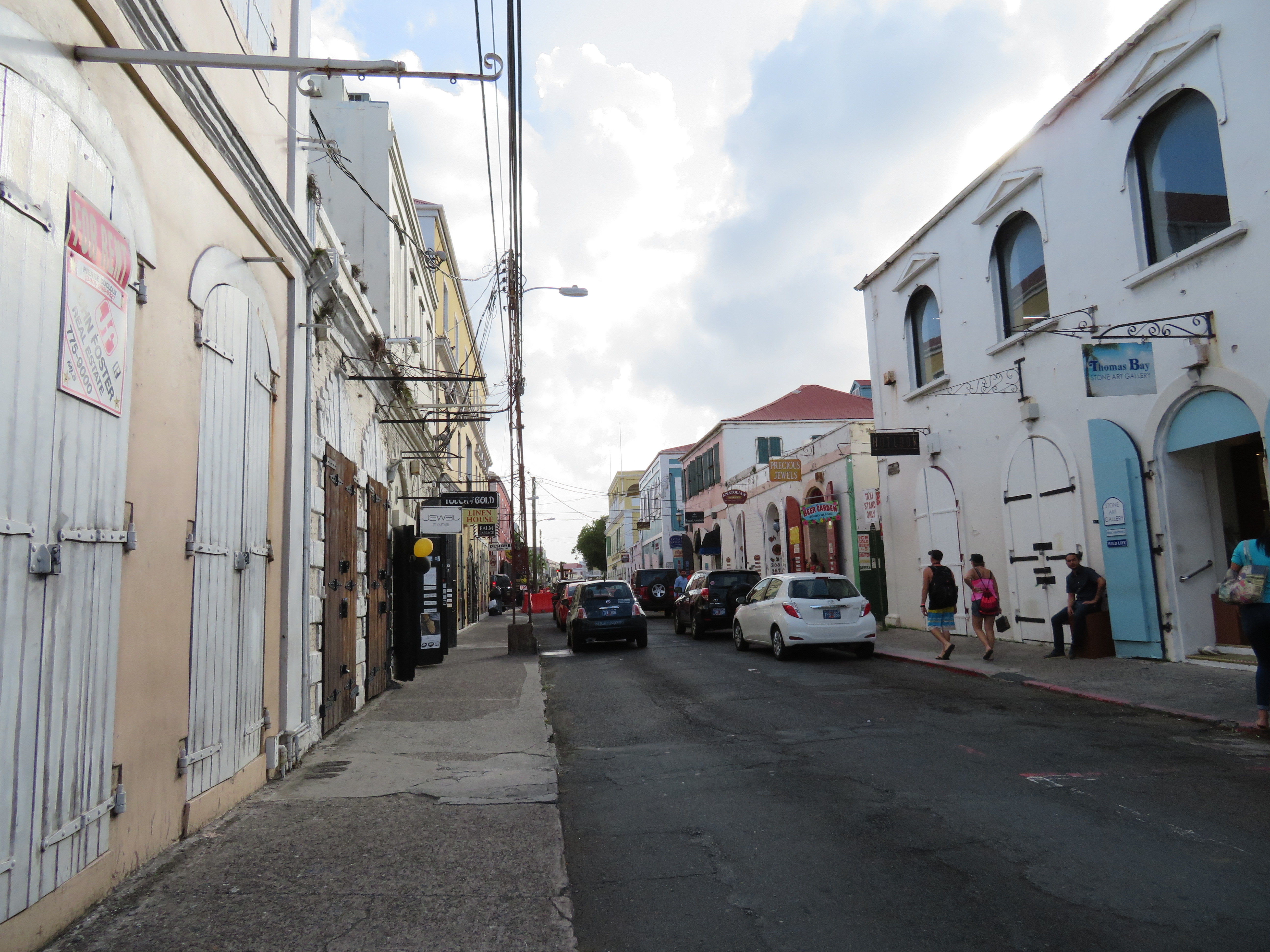 We wandered the tight streets of Charollette-Amerie, the capital of St. Thomas, quickly noticing the number of jewelry stores that offered tax-free merchandise. At this time,however, there were no crowds, except the few vacationers who were on our flight. Doors and windows close at 5:00p.m., leaving the restaurants that spread across the main road the only option available to those looking to socialize or grab a bite but only for a few more hours.
We wandered the tight streets of Charollette-Amerie, the capital of St. Thomas, quickly noticing the number of jewelry stores that offered tax-free merchandise. At this time,however, there were no crowds, except the few vacationers who were on our flight. Doors and windows close at 5:00p.m., leaving the restaurants that spread across the main road the only option available to those looking to socialize or grab a bite but only for a few more hours.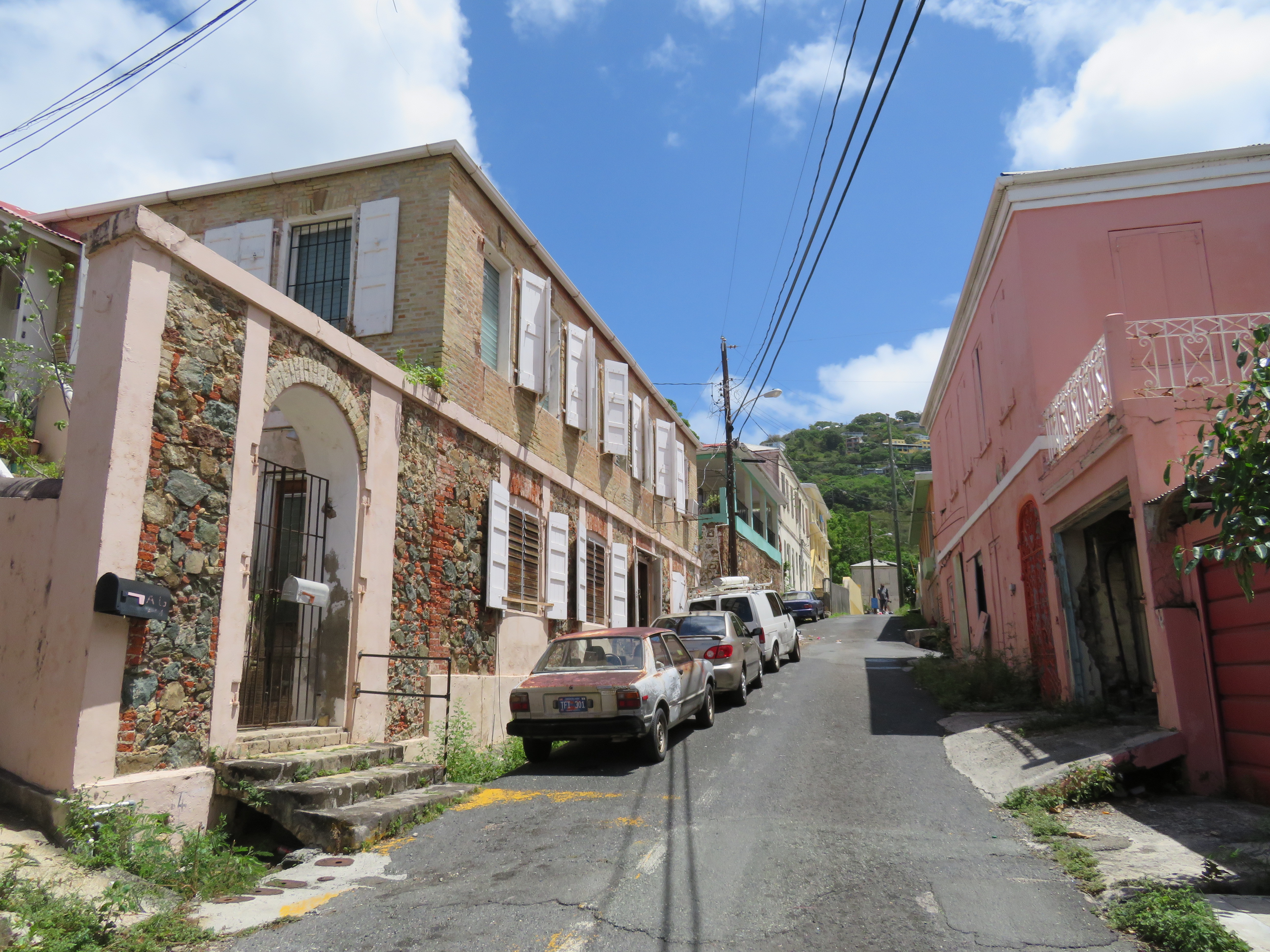 The inclined streets delineate the tiny neighborhoods above the main streets made for a perfect obstacle course. Most mornings, I jogged these areas while watching families move on island time to work, church, or school. When I finally stopped to take a breath my curiosity became piqued upon noticing the number of languages being spoken around me: Haitian Creole, Patois, and a form of Arabic that was unfamiliar to me. Questions started to fill my thoughts. How did the Virgin Islands, in general, become home to so many ethnicities? What exactly was the history of these islands? How did it become the property of the United States and the United Kingdom. After my visit there, I was left with more questions then answers due to the sheer length of how much I do not known about this region.
The inclined streets delineate the tiny neighborhoods above the main streets made for a perfect obstacle course. Most mornings, I jogged these areas while watching families move on island time to work, church, or school. When I finally stopped to take a breath my curiosity became piqued upon noticing the number of languages being spoken around me: Haitian Creole, Patois, and a form of Arabic that was unfamiliar to me. Questions started to fill my thoughts. How did the Virgin Islands, in general, become home to so many ethnicities? What exactly was the history of these islands? How did it become the property of the United States and the United Kingdom. After my visit there, I was left with more questions then answers due to the sheer length of how much I do not known about this region. The islands were originally inhabited by either the Carib or Taino Indians, and Columbus happened upon them in 1493, which led to the death of two crew members. Consequently, he decided not to come back. Eventually, the islands became a stop over point for traders and pirates until it was eventually settled by the Dutch in 1660.
The islands were originally inhabited by either the Carib or Taino Indians, and Columbus happened upon them in 1493, which led to the death of two crew members. Consequently, he decided not to come back. Eventually, the islands became a stop over point for traders and pirates until it was eventually settled by the Dutch in 1660. Like most Caribbean islands, slaves were brought over to work the land and where eventually emancipated in 1848. In 1917, the United States purchased the islands of St. Thomas, St. Croix, and St. John prior to entering World War I. The U.S. embargo against Cuba in 1959 ignited tourism, bringing huge numbers of cruise ships and flights that still come in droves today.
Like most Caribbean islands, slaves were brought over to work the land and where eventually emancipated in 1848. In 1917, the United States purchased the islands of St. Thomas, St. Croix, and St. John prior to entering World War I. The U.S. embargo against Cuba in 1959 ignited tourism, bringing huge numbers of cruise ships and flights that still come in droves today. “There is a lot of politics and bullshit that comes with living here, but it is worth it.” Words of frustration spoken by a 20+ year expat from Anguilla to my friend who was considering moving here for his twilight years. The expat had moved here prior to the increasing commercial and touristic interests and missed the rugged beauty of the island and felt disgust for the piles of trash left just out of sight of the main tourist areas. Combine this with increased crime that prompted another expat, who decided to raise a family here, to chime in and remember a time he could leave his front door open without worry. Yet no matter what each of them said they always concluded with, “We cannot make ourselves leave or live anywhere else.” No matter how many times our conversations with locals strayed into the negative aspects, these sentiments was expressed and consolidated the thought that a bit of the unspoiled beauty was lost yet there was still much to enjoy about being there.
“There is a lot of politics and bullshit that comes with living here, but it is worth it.” Words of frustration spoken by a 20+ year expat from Anguilla to my friend who was considering moving here for his twilight years. The expat had moved here prior to the increasing commercial and touristic interests and missed the rugged beauty of the island and felt disgust for the piles of trash left just out of sight of the main tourist areas. Combine this with increased crime that prompted another expat, who decided to raise a family here, to chime in and remember a time he could leave his front door open without worry. Yet no matter what each of them said they always concluded with, “We cannot make ourselves leave or live anywhere else.” No matter how many times our conversations with locals strayed into the negative aspects, these sentiments was expressed and consolidated the thought that a bit of the unspoiled beauty was lost yet there was still much to enjoy about being there.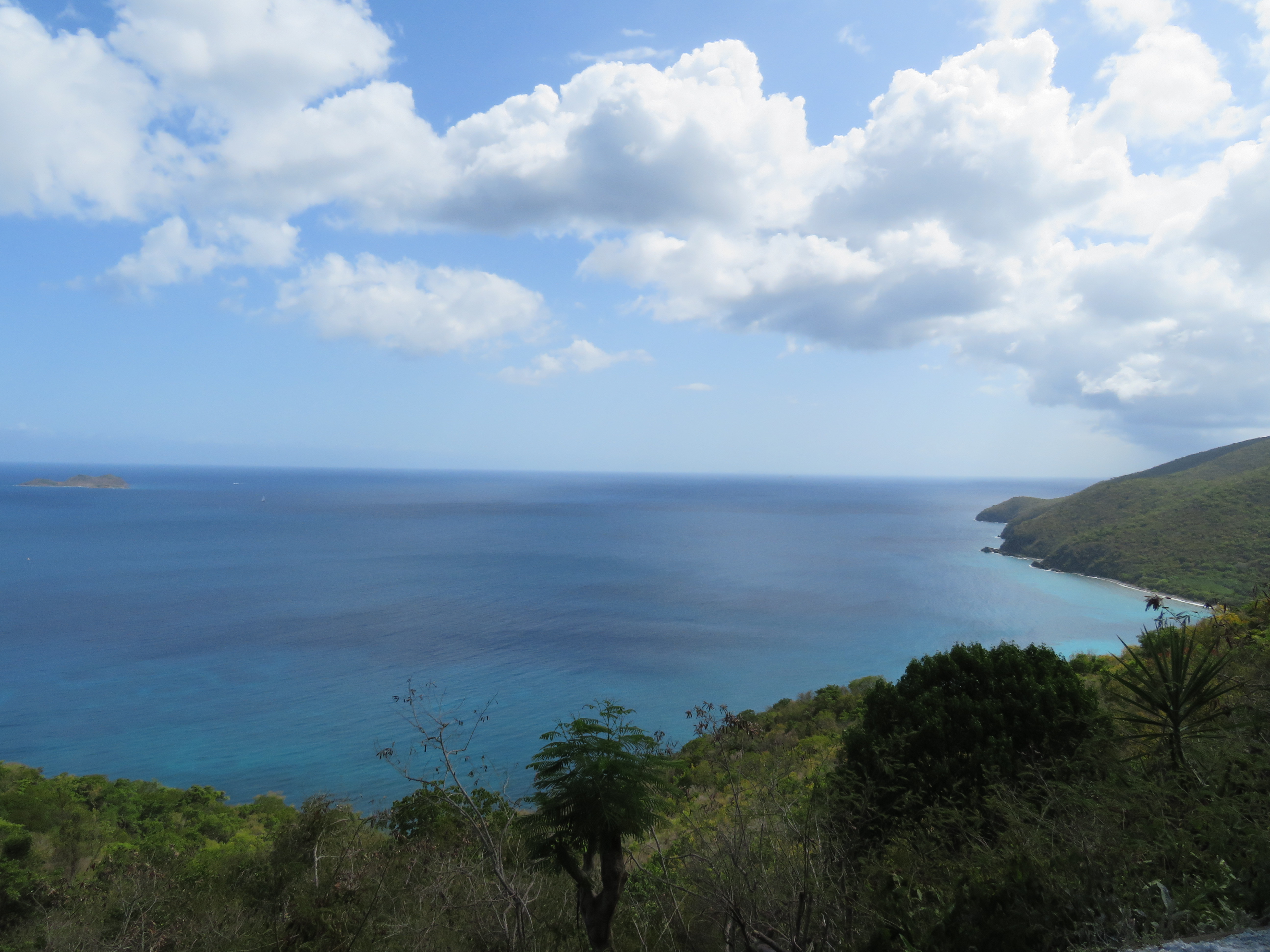 It only takes 20 – 25 minutes to get from where you are to any point on the island. Don't worry about the name of the road, streets, or even major causeways. Everyone eventually learns how to get from Point A to B. You simply need to know where you want to go and aim for it’s general direction. Even missing your stop is of minor importance as all roads loop back around bringing you to your starting point and allowing you to start over.
It only takes 20 – 25 minutes to get from where you are to any point on the island. Don't worry about the name of the road, streets, or even major causeways. Everyone eventually learns how to get from Point A to B. You simply need to know where you want to go and aim for it’s general direction. Even missing your stop is of minor importance as all roads loop back around bringing you to your starting point and allowing you to start over.
Now, here is your guide to the island that is neatly divided into North, South, East, and West. On the East you have Red hook, which stays open until the wee hours of the morning. You have your bars, debauchery, and strip clubs and where you will most likely see the sun rising as you stumble back to your hotel.
On the East you have Red hook, which stays open until the wee hours of the morning. You have your bars, debauchery, and strip clubs and where you will most likely see the sun rising as you stumble back to your hotel. Close to Charolette-Amerile is Frenchtown, which is aptly named due to it’s history as a French province, and it has the most variety when it comes to local cuisine. There you will find a variety of restaurants serving dishes such as Maui-Maui sandwiches, pescado (fish) con arepas, flash fried chicken livers, Thai peanut chicken skewers, and a soft as butter garlic bread.
Close to Charolette-Amerile is Frenchtown, which is aptly named due to it’s history as a French province, and it has the most variety when it comes to local cuisine. There you will find a variety of restaurants serving dishes such as Maui-Maui sandwiches, pescado (fish) con arepas, flash fried chicken livers, Thai peanut chicken skewers, and a soft as butter garlic bread.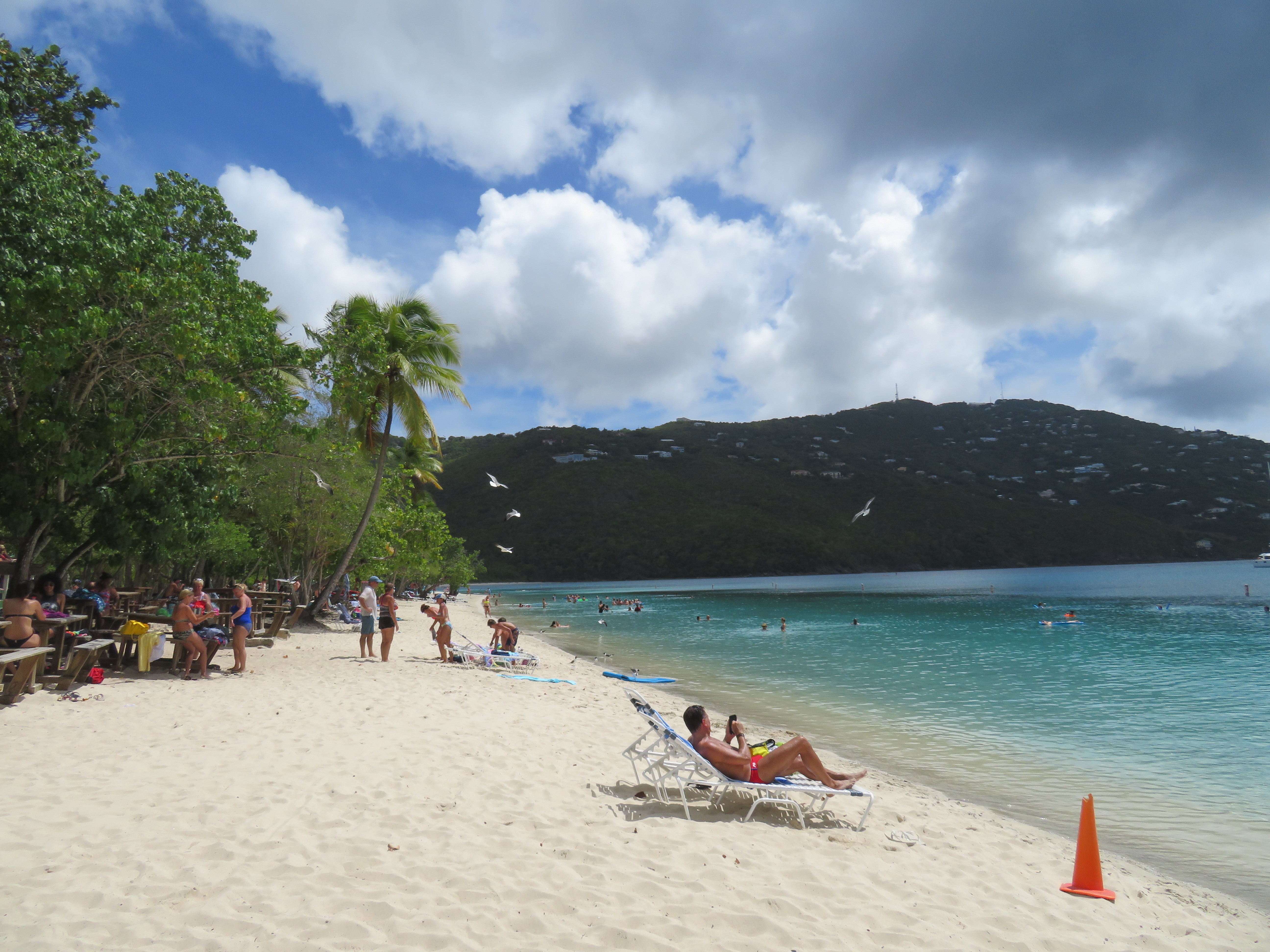 The apparently world-famous Maeoby Beach is in the North, which I believe is a little overly hyped but worth the price of admission for it’s cleanliness and being able to drink alcohol after taking a dip. Charlotte-Amelie is in the South and has the most history. Fort Christian served as both a fort for the Danish militia and as a prison during it’s later years. A market place now showcases various local foods and fruits, but it was once an auction block for slaves The St. Thomas Synagogue which holds scrolls saved from Hitler’s final solution for his Museum for Extinct Peoples as well as others brought out of the Iberian Peninsula (modern day Spain/Portugal) by Sephardic Jews during the Inquisition of Queen Isabella and King Ferdinand around 1492.
The apparently world-famous Maeoby Beach is in the North, which I believe is a little overly hyped but worth the price of admission for it’s cleanliness and being able to drink alcohol after taking a dip. Charlotte-Amelie is in the South and has the most history. Fort Christian served as both a fort for the Danish militia and as a prison during it’s later years. A market place now showcases various local foods and fruits, but it was once an auction block for slaves The St. Thomas Synagogue which holds scrolls saved from Hitler’s final solution for his Museum for Extinct Peoples as well as others brought out of the Iberian Peninsula (modern day Spain/Portugal) by Sephardic Jews during the Inquisition of Queen Isabella and King Ferdinand around 1492. Charolette-Amelie is also where you will also find a variety of food carts lining the docks and ferries ready to take you to the other islands.
Charolette-Amelie is also where you will also find a variety of food carts lining the docks and ferries ready to take you to the other islands. With passport in hand, I arrived at Tortola in the British Virgin Islands. It is quite a bit more spread out than St. Thomas and has more natural beauty, which I did not have time to fully explore and appreciate. Instead, I stayed confined to the aptly named Road Town. The brief four hours spent, due to a limited ferry schedule, allowed me to learn that their was not much difference between the USVI and the BVI except for population.
With passport in hand, I arrived at Tortola in the British Virgin Islands. It is quite a bit more spread out than St. Thomas and has more natural beauty, which I did not have time to fully explore and appreciate. Instead, I stayed confined to the aptly named Road Town. The brief four hours spent, due to a limited ferry schedule, allowed me to learn that their was not much difference between the USVI and the BVI except for population. “It is better to be poor in your own country then in a foreign one,” my waitress told me over my meal of conch fritters. Our conversation turned quickly to quality of life and cost of living on the islands, which has higher fees due to the importation of almost all goods. Even local beef is sent to the main land (United States) to be processed and sent back to the island at higher costs only to be re-shipped out, a fact that amazed me.
“It is better to be poor in your own country then in a foreign one,” my waitress told me over my meal of conch fritters. Our conversation turned quickly to quality of life and cost of living on the islands, which has higher fees due to the importation of almost all goods. Even local beef is sent to the main land (United States) to be processed and sent back to the island at higher costs only to be re-shipped out, a fact that amazed me. Similar to American tourists, the English are difficult to find During the off season, the only sign of them is in the numerous adverts of Richard Branson hosting the Obamas and the number of yachts parked at the marina for safe keeping until their owners return in the winter.
Similar to American tourists, the English are difficult to find During the off season, the only sign of them is in the numerous adverts of Richard Branson hosting the Obamas and the number of yachts parked at the marina for safe keeping until their owners return in the winter. A quick tour around the town yielded a quick history lesson. Multiple denomination churches line side streets as well as the Her Majesty’s Church an unkempt area is where slaves were emancipated. It is now used as an area to stop and catch your breath.
A quick tour around the town yielded a quick history lesson. Multiple denomination churches line side streets as well as the Her Majesty’s Church an unkempt area is where slaves were emancipated. It is now used as an area to stop and catch your breath. Returning to St. Thomas, in the late afternoon, I met my friend and we concluded our trip with a Caribbean dinner that included chicken in a light sauce, seasoned rice, vegetables, and a final look at the sun setting behind the horizon.
Returning to St. Thomas, in the late afternoon, I met my friend and we concluded our trip with a Caribbean dinner that included chicken in a light sauce, seasoned rice, vegetables, and a final look at the sun setting behind the horizon.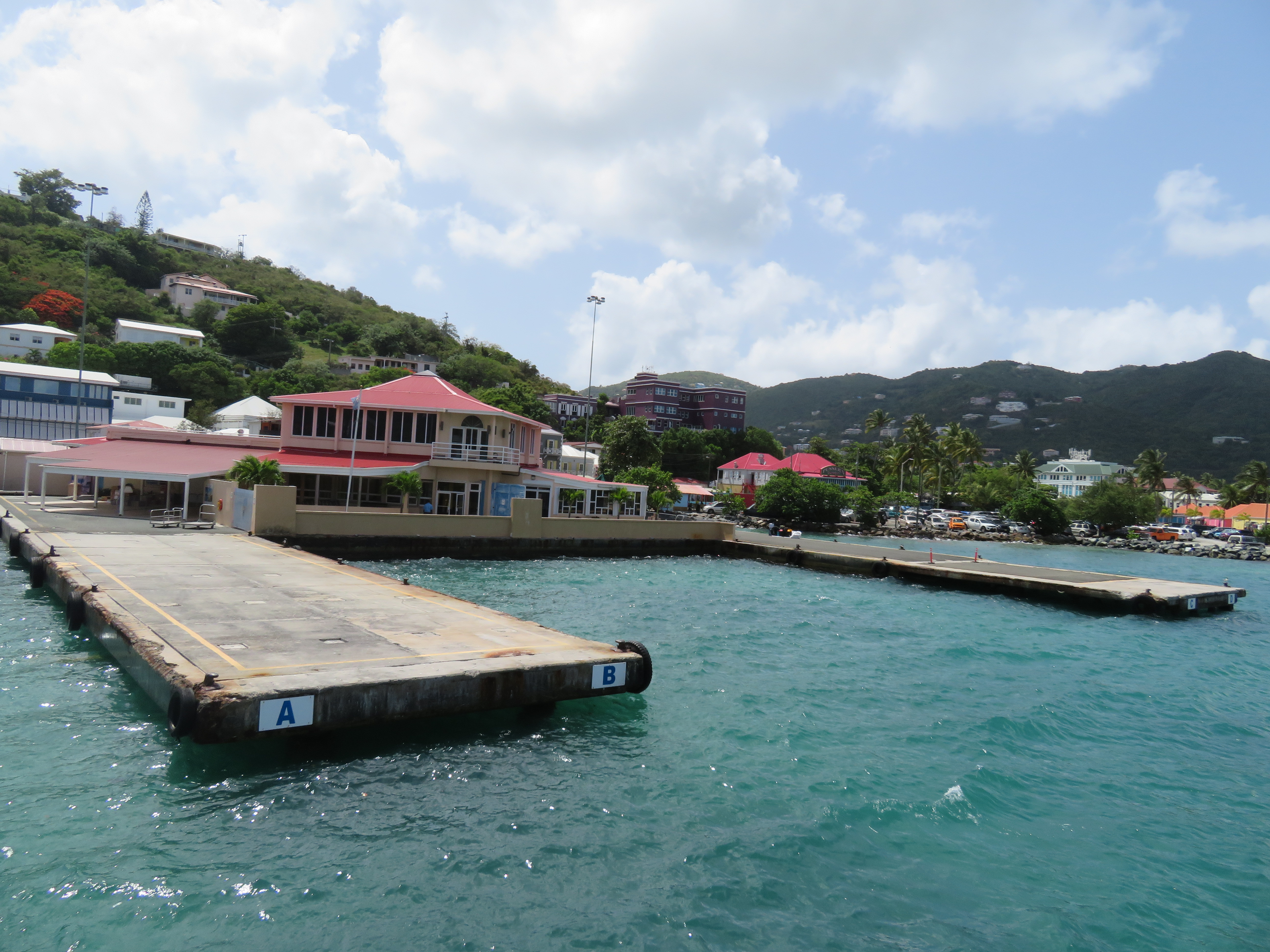 I was wrong about the Virgin Islands. I was quite satisfied on the U.S. and British sides, as being in the Virgin Islands provides an opportunity to pause your life and simply do nothing while the sea calls you in for a cool swim.
I was wrong about the Virgin Islands. I was quite satisfied on the U.S. and British sides, as being in the Virgin Islands provides an opportunity to pause your life and simply do nothing while the sea calls you in for a cool swim. Did I learn the answers to all my historical based questions? No. From time to time, I heard references to the pirates and people who once inhabited the islands and the back and forth of colonizing countries, but what I had to remember was the time to learn would be later as, at the moment, my only task was simply to rest.
Did I learn the answers to all my historical based questions? No. From time to time, I heard references to the pirates and people who once inhabited the islands and the back and forth of colonizing countries, but what I had to remember was the time to learn would be later as, at the moment, my only task was simply to rest.